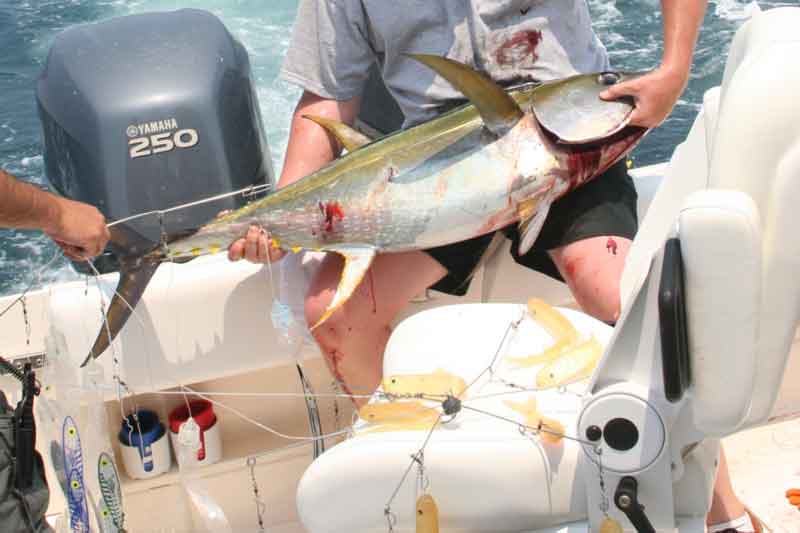You want to tip the scales of encountering marlin, tuna, mahi-mahi, and other pelagics in your favor, the next time you go offshore trolling? Now’s the time to begin prepping your gear, your boat, and your brain—start by taking these three tips into account.

- Pull a dredge. If space is at a premium on a small boat, get one like the StripTeaser, which is easy to stow, deploy, and pull from a small boat. In fact, if you’re smart you’ll never leave the inlet without one. Weight it down enough to keep it well below the surface and always, always, always run a small naked ballyhoo from a flat-line set just 10’ or 15’ behind the last teaser on the dredge. Sure, everyone thinks of dredges as billfish-attractors, and they are. But yellowfin home in on these dredges a lot more often than one might think. That ballyhoo will often get snapped up by a tuna, and afterwards if you check the dredge, as often as not you’ll discover pin-holes in the mylar teasers. You’re not familiar with running dredges? No problem, check out this Deploying a Dredge video.
- If you’re pulling spreader bars for tuna—and most of us are—run another small naked ‘hoo just off to the sides and/or behind each one that’s not in the whitewater. Keep an eye on those bars, too. Quite often you’ll see a marlin swinging his bill at the squid, and the ballyhoo will be pre-positioned properly to feed the billfish. Grab the rod, crank the ballyhoo even with the bar, swing the rod tip to get the bait properly positioned, then go into freespool and try a drop-back. It may take a few attempts because often the fish seem intent on bashing a squid or two out of the “school” and they don’t always pay attention to the ballyhoo on the first or second try. But eventually you can usually divert their attention. If not, you can post an angler on the rod with the spreader bar and have him or her reel the bar up while you send the ballyhoo back. It’s a risky maneuver because the marlin might follow the bar until it gets too close to the boat for comfort, then disappear forever. But sometimes, making this move is necessary to distract it from the squid.
- Lower the volume level on your boat. Fish can hear (or at least sense the vibrations) of things like slamming hatches, sliding coolers, and yelling people. Pulling a hydrophone in the spread and recording the noises coming from a boat will give some shocking insight into just how loud it can be 50 feet behind the transom. You’ll clearly hear noises from the boat that are far louder than the engines, especially the noise of people yelling. You’ve heard of “window shopper” billfish that came up on a lure or bait, then disappeared without attacking, right? When a billfish gets spotted in the spread people often yell and shout as cockpit mayhem ensues. Could there be a connection? We can’t say for sure, but the bottom line is that in virtually every type of fishing, anglers recognize that making noises can spook fish. So, why should it be any different offshore?